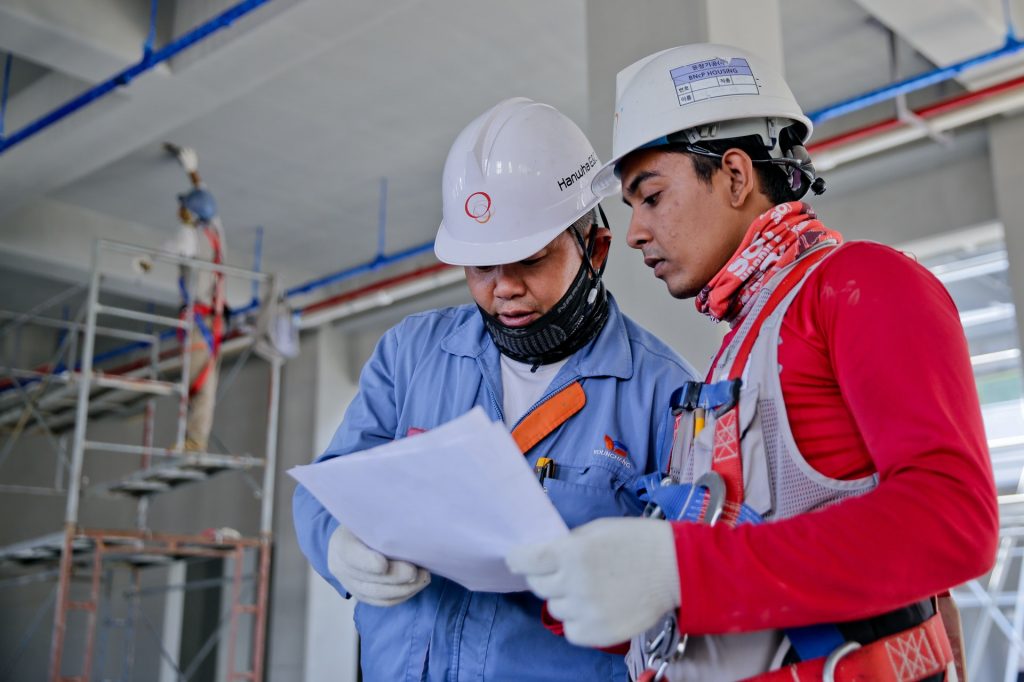
Health and safety compliance is paramount for businesses of every shape and size.
Workplace accidents, fatalities and other harmful incidents are still common, but the stats have come down considerably in recent years and we largely have workplace health and safety regulations to thank for our safer modern working environments.
This is partly due to the modernisation of health and safety regulations and the obligations placed on businesses to ensure the safety of both employees and customers.
All businesses should be conscious and aware of their health and safety obligations.
Here are 8 things your business must do to be health and safety compliant:
Health and Safety Compliance Checklist
1. Decide Who Can Help You With Health and Safety
The law requires businesses to appoint what’s known as a ‘competent person’ who will assist in health and safety responsibilities. There is no formal definition of what constitutes a ‘competent person’ - many small business owners decide to appoint themselves. Alternatively, any employee could be appointed as a competent person, usually a senior employee who has a helpful qualification or training, often from their previous jobs.
Larger or higher-risk businesses will need to appoint someone with specialist knowledge, such as a health and safety officer.
2. Create a Health and Safety Policy
Businesses with 5 or more employees need a written health and safety policy. Those with fewer than 5 do not need a health and safety policy in writing, but will nevertheless need to consider health and safety in the workplace.
This policy has 3 main features; a statement of intent, a section that deals with the health and safety roles and responsibilities of people in the business, and a section that makes provisions or plans for health and safety. HSE provides a template that can be downloaded here.
3. Control the Risks in the Workplace
Businesses will need to carry out a risk assessment. Risk assessments are usually simple and straightforward for smaller businesses and HSE provides basic guidance here. Risk assessments should cover fire risks as per the Regulatory Fire Safety Order 2005 (RRFSO 2005) as well as electrical safety and the provision of welfare and first aid.
Businesses will need to control risks in the workplace. Whilst risks should be eliminated where possible, the law realises that this is not always possible. Where risks cannot be eliminated, controls must be put in place to reduce risks.
Some common areas of risk that should be scrutinised are slip and trip hazards, falling from heights, moving vehicles, machinery and equipment and hazardous substances.
HSE provides a series of risk assessment case studies for comparison here. Some industries also present additional risks and considerations that are covered by other legislation such as the Control of Substances Hazardous to Health 2002 and Work at Height Regulations 2005. Consult HSE’s A-Z of guidance by industry for more information.
4. Consult Employees on Health and Safety
All employees should be consulted on health and safety. Employees should be informed about:
- Health and safety and how it interacts with the work they do
- How health and safety risks are controlled
- How training can help
Engaging in open conversation with your employees is the best way forward. Employees can be given certain roles to enact in case of emergency, e.g. an employee with the first-aid experience may be designated to apply first-aid. It’s worth noting that whilst employees can be given health and safety responsibility, the main accountability still lies with management and business owners.
5. Training and Equipment
Employees may need training and/or protective equipment in order to do their job safely. Training includes fire safety training, manual handling, dealing with hazardous substances and safely operating machinery.
Keeping employees in the loop of health and safety workplace rules is the management’s responsibility. Posters, leaflets and other guidance should be given to employees to keep them informed of risks and how they can be managed.
There are legally compliant health and safety law posters that can be downloaded from the HSE website here.
There are some specific regulations for the upkeep and maintenance of equipment, such as LOLER (The Lifting and Lowering Equipment Regulations) which requires lifting equipment to be checked and maintained at periodic intervals. Businesses that use gas appliances including cookers will need to be inspected for gas safety, usually every year.

6. Workplace Facilities and Welfare
Workplaces must meet a basic standard of facilities and welfare provisions. These provisions help protect employees from risks and other workplace-related harm whilst helping ensure their wellbeing whilst at work.
Welfare facilities include:
- Toilets and washing basins with soap and a means to dry hands
- Drinking water
- Somewhere to eat and rest
- Storage for items and clothing
Welfare provisions include:
- Reasonable working temperatures of 16 ºC, or 13 ºC for strenuous work
- Sufficient lighting to reduce eyestrain
- Ventilation
- Basic cleanliness and hygiene
- Suitable workstations, desks and seating to provide good posture and reduce the risk of RSI
7. First-Aid and Health
Employers are responsible for the immediate care of employees if they hurt themselves or fall ill. First-aid is a must for any business, the basic requirements are:
- A complete first-aid kit
- Someone who is appointed to administer first-aid
- Employees must be informed of the location of first-aid kits and other first-aid arrangements
Any dangerous incidents or injuries must be reported to RIDDOR under Reporting of Injuries, Diseases and Dangerous Occurrences Regulations 2013.
8. Have the Right Business Insurance
Virtually all businesses in the UK are required to have Employer’s Liability Insurance. This insures against employees causing serious harm or damage to themselves or others and their property. Employers’ Liability Insurance may pay a business’s compensation costs resulting from workplace injury or damage claims. Other types of business legal cover are advantageous for some businesses, such as Public Liability Insurance and Professional Indemnity Insurance (PII). These can often be taken as a package.
Summary: 8 Things Your Business Must Do to be Health & Safety Compliant
Compliance with health and safety regulations is usually common sense for smaller businesses but its complexity scales with a business’s size and risk profile. Even so, small businesses are far from exempt from health and safety laws.
By taking a methodical approach to health and safety and following HSE’s guidance, businesses can establish compliant health and safety rules and protocols which then simply need to be maintained. A regular health and safety audit should ensure that a business is up to date on its responsibilities and remains compliant with new legislation that is in place in the Bromley Borough<s/span>



